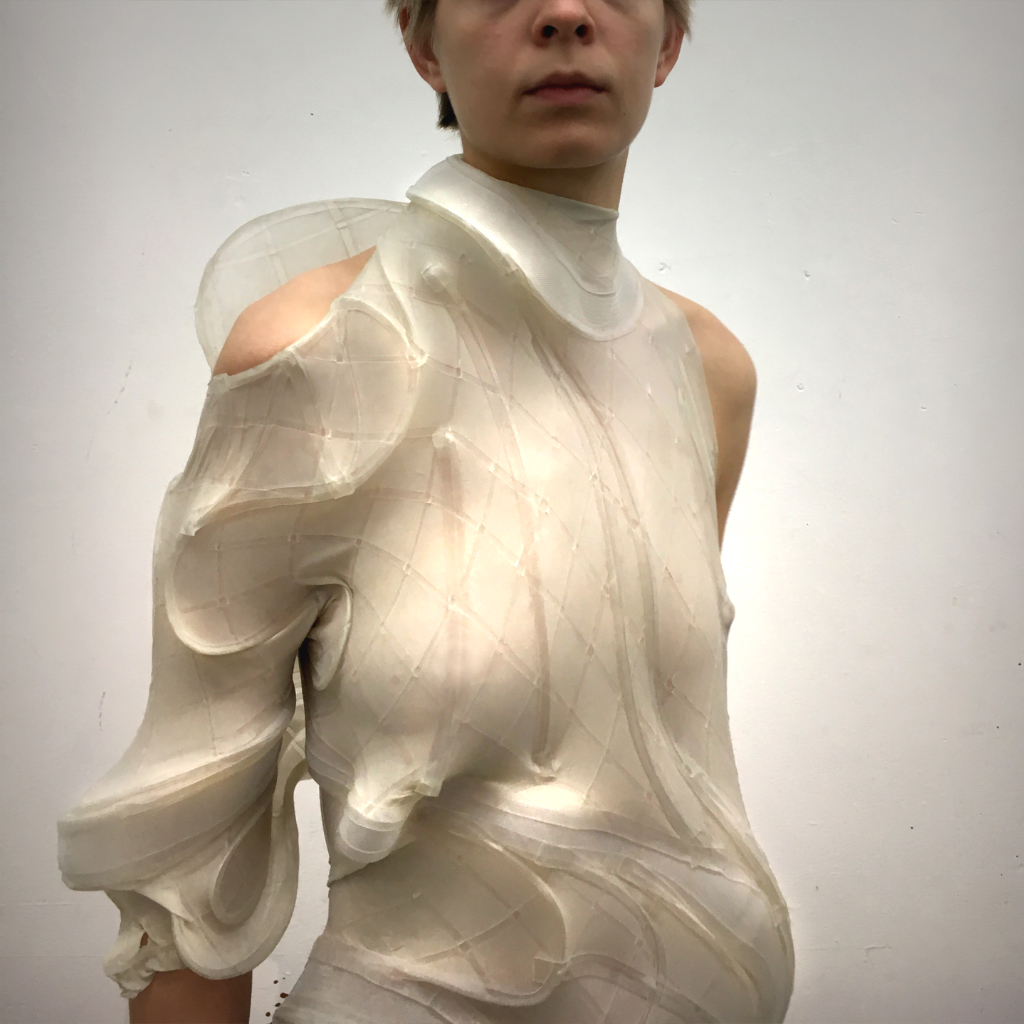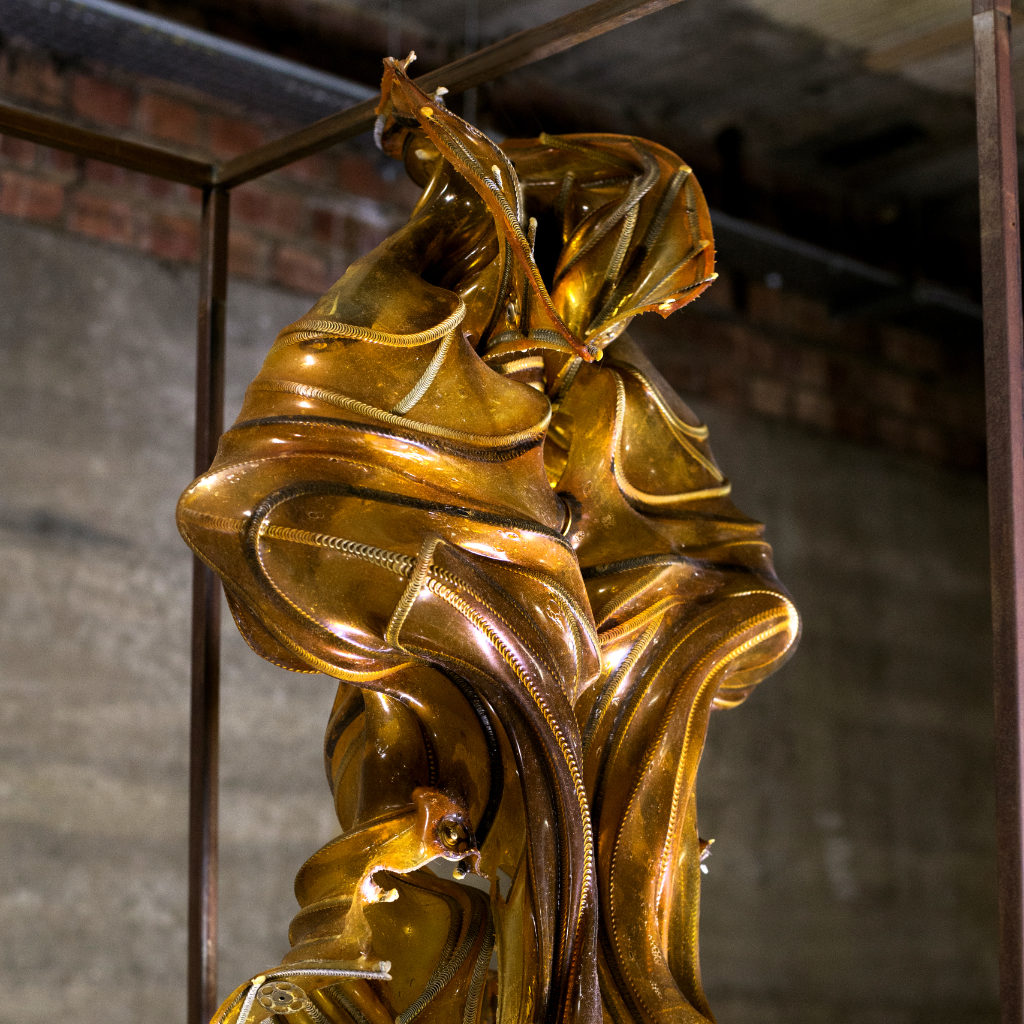Interview by Bahar Emirzade

Fashion: a reflection of our times, politics, showcase of individuality. Follow it or not, fashion is inescapable for the mere fact that everyone wears clothes! However, are we really what we wear? From child labour to environmental pollution, fashion is an industry with many unsustainable, unethical practices. Is this the reflection of our times? As wearable art, fashion surely is one of the most accessible art forms.
With the convenience of online shopping and vintage shops, most of us have the privilege of choosing items to dress for the message we want to express. Should we put more effort into it, our style could show more than just how many fashion shows we have watched. For anyone defending the rights of animals and the environment, it is hypocritical to be wearing jeans produced by an industry that leaves huge amounts of carbon footprint.
Louis Alderson-Bythell (LAB), a recent graduate from the Royal College of Arts, is part of the sustainable fashion movement and the Biodesign challenge. Bythell’s designs are both characteristic and eco-friendly. Using materials such as silica, the fashion designer’s products have almost no carbon footprint. Each item is designed diligently by Bythell himself as he experiments using various eco-friendly materials and elegant styles. Maybe new generation designers could change how we think of the fashion industry, from the pinnacle of consumerism to eco-friendly ethical items that reflect our identities.
Biodesign Challenge and its students are here to offer possibly the best alternatives for the future that are definitely more ethical than what we have now. In the challenge, university students and teams of biologists are matched on projects that blend biology and art. Students observe biological processes and use them as an inspiration for their designs. The project aims to tackle sustainability issues in several design aspects using biological tools. With respect to the fashion industry alone, the use of sustainable materials can instigate drastic changes.




For those that are not familiar with your work, could you tell us your background?
I have a background in Fashion, having worked as a design assistant in the past prior to completing an MA last year at the RCA. Currently, I am working on a project with a team of designers as well as some UK research institutions, where we are developing a supplementary service for farmers to pollinate their crops with flies. Over the past few years, I have been involved in a few projects exploring the intersection between science, design and the arts.
Your collection finds inspiration in the natural world with a mix of synthetic and organic textures that somehow blurs the borders between the artificial and natural worlds. What is the intellectual process behind it?
There is a huge amount of inspiration that I draw from the organic and particularly ‘how biology builds’, and this lives in a dichotomy of fascination with the ways in which our machines work and shape us. This work is an ongoing investigation into production processes, looking at how we might fabricate 3D structures in a singular process that embeds all fixtures and finishing allowing the structures to form by themselves.
The works are all made in one flat and then allowed to dry and contract into shape over time. This methodology exploits the agency of the material itself, allowing a level of co-design that is learned through rapid iterations. I wanted to question the manufacturing methods that we are married to within fashion, where the sheer amount of processes involved in traditional manufacture correlate with wastage (environmental and economic) at every stage, and whether we could re-think how we create 3D forms for the body to tackle that.
I often consider, throughout my work, how our tools and machinery and agency over the design process comes to producing garments. Perhaps this stemmed from my own subjective view of making, which always, even subconsciously, in the planning involves an interplay between the tools that will be used and the fantasy. I considered this convergence of skills we have acquired as an industrial society and that these processes and methods we have developed would, at some point, have been/ are still being inspired by the world around us. Ultimately the body of work I produced stemmed from establishing different construction criteria, which might be seen as limitations. However, the constraints are what really helped me to push the work forward.
What were the biggest challenges you faced in its development?
A big challenge when I’m working with new/ re-contextualised material is perseverance and allowing the time to garner the tacit knowledge of how to work with it. One of the materials, in particular, is a water-catalytic resin that has a cure time of about half a minute after mixing, so it was pretty much like finding the biting point of a clutch in order to know when to stop working it. (I did get stuck to the pieces quite a few times). Constantly asking myself why I don’t just sew things together… I also had to get past a plethora of really ugly samples to get to a point where I thought I was onto something, but I’ve learned to love them now.
What directions would you like to take your work into?
At the moment, I’m working with another collaborator on a project at the architectural scale, which is exciting, I am keen on exploring how my work could be seen as environments or augmentations, but I’ll go pretty much anywhere a material will take me.
What is your chief enemy of creativity?
Landlords.
You couldn’t live without…
Wine and Fags.





